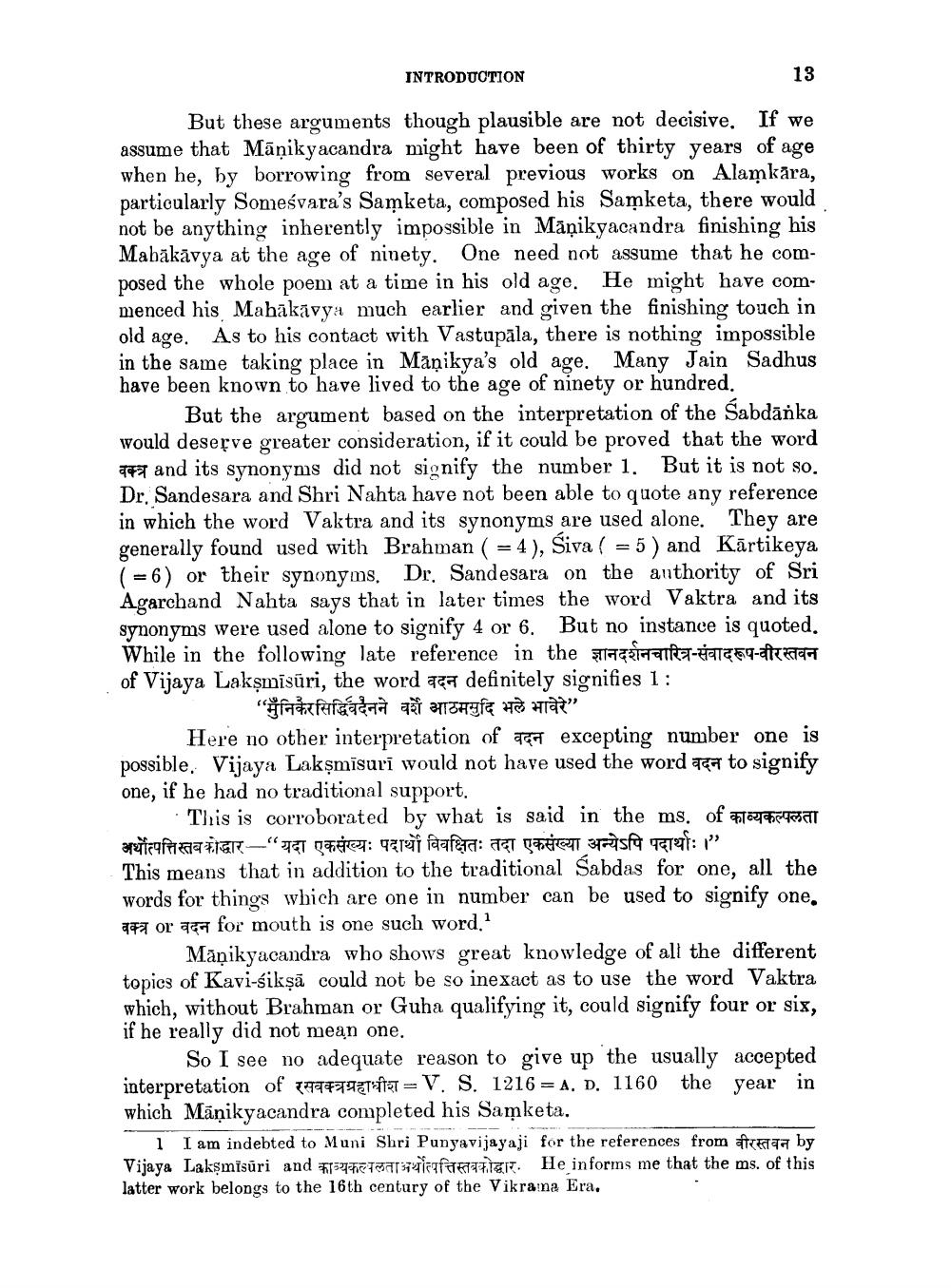________________
INTRODUCTION
13
But these arguments though plausible are not decisive. If we assume that Māņikyacandra might have been of thirty years of age when he, by borrowing from several previous works on Alamkāra, particularly Someśvara's Samketa, composed his Samketa, there would not be anything inherently impossible in Māņikyacandra finishing his Mabäkävya at the age of ninety. One need not assume that he composed the whole poem at a time in his old age. He might have commenced his Mahākāvya much earlier and given the finishing touch in old age. As to his contact with Vastupāla, there is nothing impossible in the same taking place in Māņikya's old age. Many Jain Sadhus have been known to have lived to the age of ninety or hundred
But the argument based on the interpretation of the Sabdanka would deserve greater consideration, if it could be proved that the word 972 and its synonyms did not signify the number 1. But it is not so. Dr. Sandesara and Shri Nahta have not been able to quote any reference in which the word Vaktra and its synonyms are used alone. They are generally found used with Brahman ( = 4), Siva ( = 5) and Kārtikeya (= 6) or their synonyms. Dr. Sandesara on the authority of Sri Agarchand Nahta says that in later times the word Vaktra and synonyms were used alone to signify 4 or 6. But no instance is quoted. While in the following late reference in the a rea-agen-
agent of Vijaya Lakşmisüri, the word ach definitely signifies 1 :
"मुँनिकैरसिद्धिवंदैनने वर्शे आठममुदि भले भावेरे" Here no other interpretation of an excepting number one is possible, Vijaya Lakşmisuri would not have used the word aga to signify one, if he had no traditional support.
This is corroborated by what is said in the ms. of 172 Pasal अर्थोत्पत्तिस्तबकोद्धार-“यदा एकसंख्यः पदार्थो विवक्षितः तदा एकसंख्या अन्येऽपि पदार्थाः।" This means that in addition to the traditional Sabdas for one, all the words for things which are one in number can be used to signify one. वक्त्र or वदन for mouth is one such word.1
Māņikyacandra who shows great knowledge of all the different topics of Kavi-sikşā could not be so inexact as to use the word Vaktra which, without Brahman or Guha qualifying it, could signify four or six, if he really did not mean one.
So I see no adequate reason to give up the usually accepted interpretation of 7774742TET = V. S. 1216 = A. D. 1160 the year in which Mänikyacandra completed his Samketa.
1 I am indebted to Muni Shri Punyavijayaji for the references from aftrema by Vijaya Laksmisūri and #1527a f a61.GI. He informs me that the ms. of this latter work belongs to the 16th century of the Vikrama Era.




